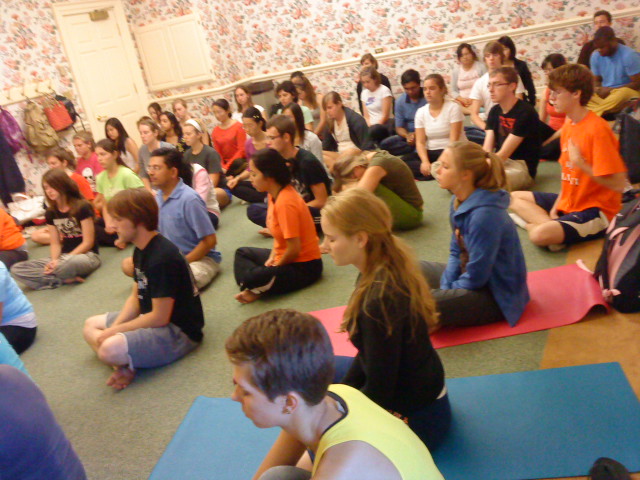
In the West, the term "Yoga" is associated almost exclusively with physical yoga postures, but in reality they are only a small - albeit important - part of the whole system. The term "Yoga" actually means a whole lifestyle, which includes the yoga postures as one of the important factors.
In Sanskrit, yoga postures are known as Asanas. Asana means "the position of giving physical comfort and mental peace." Asanas affect the glands, nerves, muscles and all other organs. They are the source of many physical benefits, but they also affect the mind. Practicing asanas puts pressure on glands and the result is a regulation of the level of hormones secreted by these glands. Hormones affect our emotions and the hormonal balance that asanas give improves concentration and meditation.
When you practice asanas, your body should be cool and calm and your stomach should be emptyl. The room should be clean and warm, and smoke free. In general, asanas should be practiced only after consulting with an experienced teacher but we have listed below three basic asanas that anyone can practice.
Spread a blanket on the floor or a mat and try these simple and effective postures:Yoga mudra: Sit with your legs crossed. Pass both hands backward and grip the left wrist with the right hand. Then bring the forehead and the nose into contact with the floor, breathing out during the process. Maintain this state for eight seconds and then rise up, breathing in. Practise eight times.
Cobra: Lie down on your chest. Supporting the weight on the palms, raise the chest, directing your head backward. Look at the ceiling. Breathe in while rising, and after having risen, hold your breath for eight seconds. Come down to original position while breathing out. Practice eight times.
Long Bow: Kneel down, and holding the palms together, extend the arms upward, keeping them close to the ears. Then bend forward in a posture of bowing down, touching the floor with the tip of the nose and the forehead. The buttocks must continue to touch the heels. While bending down breathe out and stay in a state of complete exhalation for eight seconds. Then rise up, breathing in. Practice eight times
After the asanas you should massage your body and remain at least two minutes in deep relaxation. The massage helps you to rub back into the skin oils that are given off during exercise. Deep relaxation is good for your body and mind.
The skin massage is not a deep muscle massage. This light touch of skin and a bit of attention to the lymphatic glands. First, rub your hands together repeatedly to make them warm. Start with your face and head, and slowly work your body down rubbing the entire surface of the skin. Pay special attention to the throat of the underarm, groin, and space under the knees. Lymphatic glands are located in these areas..
Lie on your back with your arms stretched along the body. Make sure that your breathing is calm. Now, starting from the feet, concentrate on each body part and make sure that it is totally relaxed - without any tension in the muscles. Follow up from the feet through the legs consciously examining every part of your body, then through the abdomen, the abdomen (also feeling like relaxing in your internal organs), chest, back and shoulders. Then concentrate on fingers, hands and whole arms, then on the neck, face (relaxing facial muscles, eyes) and finally end at top of your head, feeling that your brain is also relaxed.
Deep relaxation is important especially for those who perform mental work. Do it during the day as often as you want. Whenever you feel mentally tired, even a few minutes can be enough to refresh and recharge your energy.